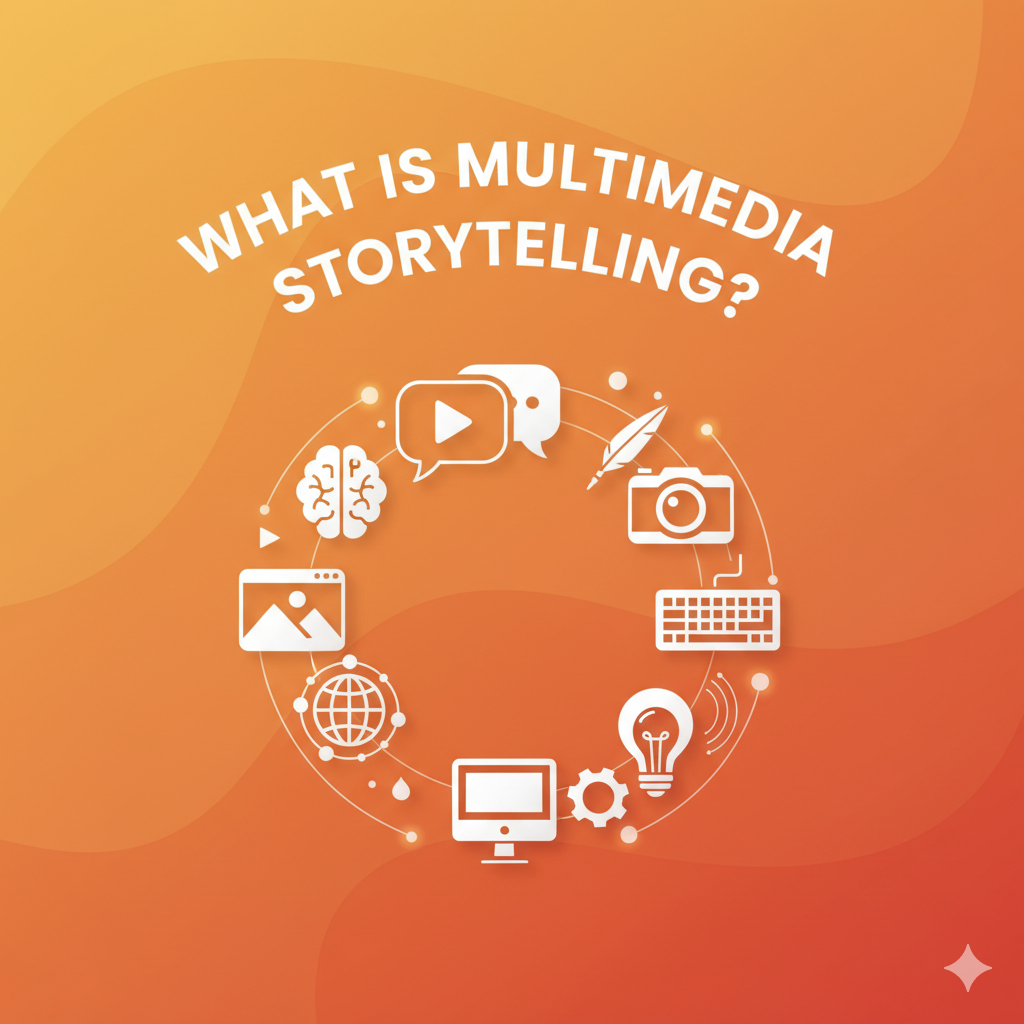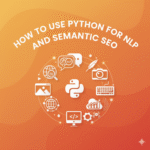Multimedia storytelling is the art of combining multiple content formats like text, images, video, audio, and interactive elements to tell a story that engages people more deeply than words alone. It’s how modern brands, creators, and journalists make stories come alive on screens today.
Now let’s go deeper into what it really means, how it works, and how you can use it to make your content more memorable and human.
What Exactly Is Multimedia Storytelling?
Traditional storytelling used to be simple someone wrote an article, told a story, or narrated an experience. But today’s audience doesn’t just want to read they want to see, hear, and feel your story.
That’s where multimedia storytelling comes in.
It combines different media elements such as:
- Text for depth and explanation,
- Images for visual emotion,
- Videos for context and realism,
- Audio for atmosphere and tone,
- Animations or infographics for clarity, and
- Interactive tools for engagement.
Together, they create an immersive experience that draws people into your message instead of just showing it.
Think about how The New York Times uses visuals, videos, and interviews in one long digital feature that’s multimedia storytelling at its best.
But the same approach is now used everywhere from brand campaigns to YouTube documentaries, portfolio websites, and even short Instagram reels.
Why Multimedia Storytelling Matters in 2025
Let’s be honest people’s attention spans are shorter than ever.
Scrolling habits have changed how we consume stories. If your content doesn’t feel alive, it gets lost in the feed.
Here’s why multimedia storytelling is becoming essential today:
- It holds attention better.
A video clip or an animated graphic can explain what words can’t — and faster. - It connects emotionally.
Music, voice, or facial expression can bring out empathy and trust in ways plain text never can. - It builds stronger brand recall.
People remember stories that appeal to multiple senses — not just what they read but what they see and hear. - It improves reach.
Platforms like Instagram, YouTube, TikTok, and even LinkedIn now prioritize visual or mixed media posts.
So, if you want to tell a story that actually sticks — whether it’s for your business, a social campaign, or your personal brand — multimedia storytelling is how you cut through digital noise.
The Core Elements of Multimedia Storytelling
To make your story truly multimedia, you need to understand the five major elements that bring it to life.
1. Text – The Foundation
Every great story starts with good writing. Text still forms the skeleton of your story.
It gives context, structure, and meaning.
Use it to:
- Guide your viewer through the story,
- Explain visuals or concepts, and
- Add emotional or factual depth.
The secret is to keep it simple and conversational. Multimedia doesn’t mean less writing — it means better writing.
2. Visuals – The Emotional Hook
A single image can tell what a paragraph often can’t.
Strong visuals make people pause and feel something.
Types of visuals to use:
- High-quality photography
- Illustrations
- Infographics
- GIFs or animations
- Video snippets
Each visual should support the story, not just decorate it. If you’re sharing an idea about environmental change, for instance, a photo of a melting glacier says more than a chart ever could.
3. Audio – The Mood Setter
Sound is one of the most underrated storytelling tools.
Podcasts, voiceovers, and background music can transform how your message is perceived.
Even subtle sound design — like city noise, ocean waves, or crowd laughter — can emotionally anchor your audience in your story’s world.
In brand storytelling, many companies use voiceovers or sound logos to create recognition. You might not see a brand, but when you hear its tone, you remember it instantly.
4. Video – The Story in Motion
Videos bring everything together — text, visuals, and audio.
They’re the most consumed media type today, and for good reason: they compress complex ideas into short, emotional bursts.
In multimedia storytelling, videos can appear as:
- Documentary clips
- Explainers
- Animated stories
- Customer testimonials
- Behind-the-scenes moments
Even short reels or 15-second motion clips count as storytelling — if they carry a message and emotion.
5. Interactivity – The Engagement Layer
This is where digital storytelling shines.
Interactive storytelling gives your audience a role.
They don’t just consume the story — they shape it.
Examples include:
- Quizzes and polls inside your content
- 360° videos or virtual tours
- Click-to-explore infographics
- Scrolling animations or timelines
It’s what turns a passive viewer into an active participant.
How Multimedia Storytelling Works (Step by Step)
Let’s make this practical.
Here’s how you can actually create a multimedia story — even as a solo creator or small team.
Step 1: Start with a Core Message
Ask yourself:
- What’s the one message I want people to remember?
- What emotion do I want them to feel?
Every element you choose later — video, visuals, sound — will build around this single idea.
Step 2: Map the Story Flow
Good multimedia storytelling has a flow — just like a film or book.
A simple structure looks like this:
- Introduction: Grab attention with emotion or visuals.
- Conflict or insight: Present the main idea or problem.
- Journey: Show how it unfolds — through visuals, quotes, or interviews.
- Resolution: End with a takeaway, solution, or emotional moment.
Sketch this out before creating anything. It’ll save you time later.
Step 3: Choose the Right Media Mix
Not every story needs every format.
If it’s data-driven, combine text + infographics + short video.
If it’s emotional, use photography + audio narration + minimal text.
The key is balance — use only the formats that strengthen your core message.
Step 4: Create Cohesive Design and Tone
Consistency builds trust.
Use a common tone, color scheme, and storytelling voice across all your media.
If your visuals are minimalist, don’t use overly dramatic music.
If your story tone is playful, keep your copy casual too.
Everything should feel like it belongs together.
Step 5: Publish and Promote Across Platforms
Once your story is ready, think distribution-first.
You can publish it as:
- A long-form blog with visuals and embeds
- A YouTube or Vimeo video series
- A scrolling digital story page
- Carousel posts on LinkedIn or Instagram
- Or even short snippets on TikTok
Repurpose every element — that’s the magic of multimedia storytelling.
Real-Life Examples of Multimedia Storytelling
1. National Geographic’s Digital Features
NatGeo uses breathtaking visuals, expert narration, and interactive graphics to turn data into emotional experiences. Each scroll feels like entering a new world.
2. Spotify Wrapped
Every year, Spotify’s year-end story turns user data into a colorful, interactive narrative — combining music, visuals, and humor. It’s data storytelling made human.
3. Airbnb’s “Made Possible by Hosts”
Airbnb built an emotional campaign using short films and photo essays to show how hosts create unique travel memories — simple, human, and visually stunning.
These stories aren’t random — they use multimedia elements in sync to make you feel connected.
The Role of Multimedia Storytelling in Marketing
Here’s why every marketer (or creator) should care:
- It builds trust.
People are more likely to believe stories told with real visuals or voices than just ad copy. - It boosts retention.
A story with visuals and sound is remembered 60–70% more than plain text. - It increases engagement.
Multimedia posts get more clicks, shares, and time-on-page. - It humanizes your brand.
Whether you’re a freelancer or a company, showing faces and voices creates connection.
For example, if you run a digital agency, instead of just saying “we help brands grow,” tell your story through a client’s journey video, testimonials, and behind-the-scenes shots.
That’s what turns marketing into storytelling.
Tips for Better Multimedia Storytelling
- Plan visuals early – Don’t treat photos or videos as afterthoughts.
- Keep it authentic – Real voices and real emotions always work better than scripted perfection.
- Edit for flow – Make sure transitions between media feel natural, not forced.
- Use captions and subtitles – Accessibility makes your story reach everyone.
- Test different platforms – What works on YouTube may not work on Instagram.
- Add emotion first, logic second – Emotions make people stay; logic makes them act.
- Measure engagement – Use analytics to see which format performs best.
The Future of Multimedia Storytelling
With AI tools, VR experiences, and interactive platforms evolving, multimedia storytelling is about to become even more personal and immersive.
Imagine:
- AI-generated visuals adapting to your emotions,
- Personalized stories shaped by user input,
- Virtual reality news reports or museum tours.
But one thing will never change the human story at the center.
Technology may evolve, but storytelling will always be about connection.
Conclusion
So, what is multimedia storytelling?
It’s not just a trend it’s how modern humans connect with stories today.
It’s about blending text, visuals, sound, and interactivity to create something that feels alive. Whether you’re a brand, a creator, or a marketer, mastering it can transform how people see your work.
Start small add visuals to your blogs, narrate your content in short videos, and experiment with interactive tools.
Over time, your storytelling will become not just seen but felt.



Pingback: How to Use Python for NLP and Semantic SEO - PratsDigital